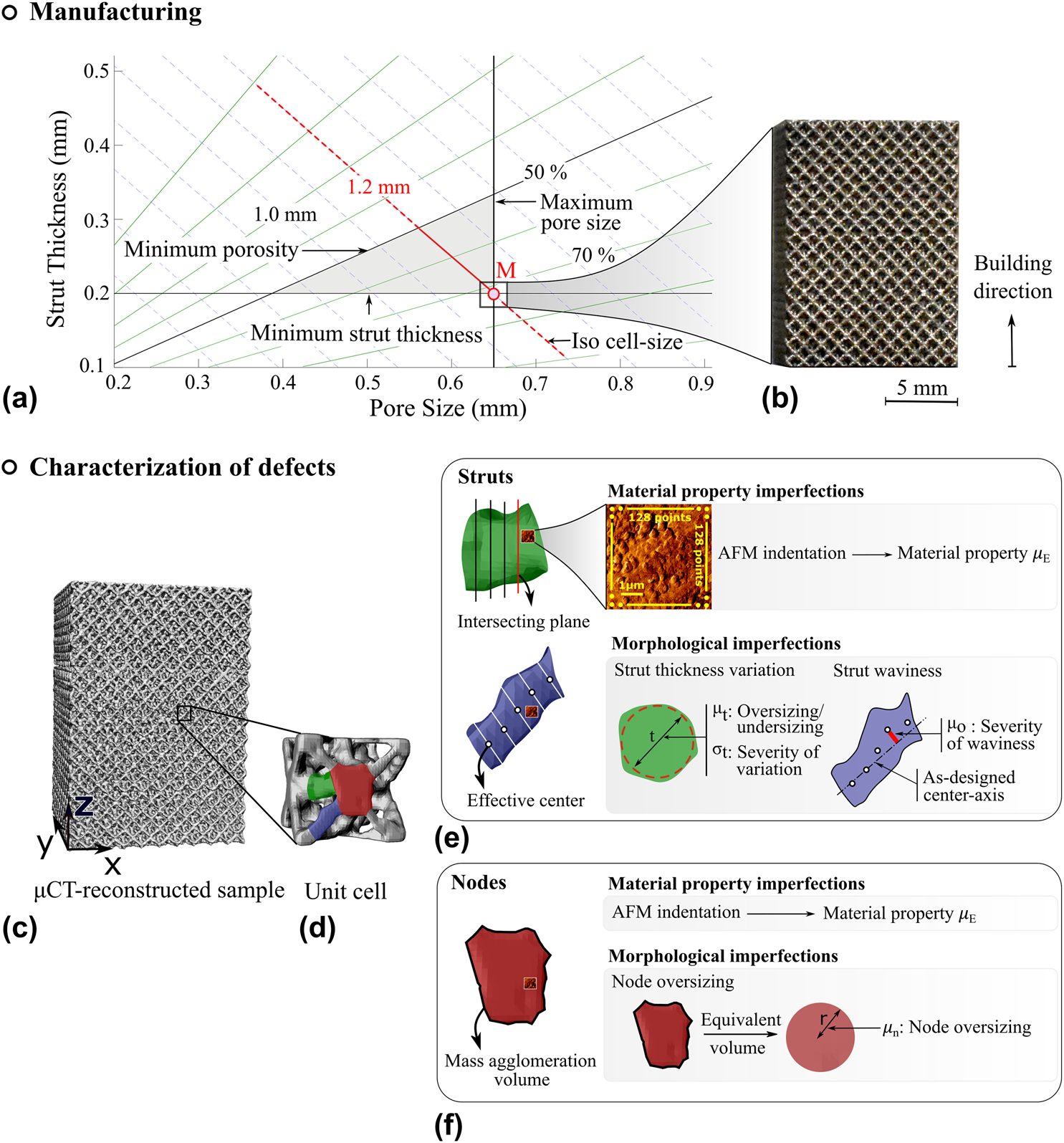Crossref Citations
This article has been cited by the following publications. This list is generated based on data provided by
Crossref.
Echeta, Ifeanyichukwu
Dutton, Ben
Leach, Richard K.
and
Piano, Samanta
2021.
Finite element modelling of defects in additively manufactured strut-based lattice structures.
Additive Manufacturing,
Vol. 47,
Issue. ,
p.
102301.
Hsieh, Meng-Ting
Ha, Chan Soo
Xu, Zhenpeng
Kim, Seokpum
Wu, H. Felix
Kunc, Vlastimil
and
Zheng, Xiaoyu
2021.
Stiff and strong, lightweight bi-material sandwich plate-lattices with enhanced energy absorption.
Journal of Materials Research,
Vol. 36,
Issue. 18,
p.
3628.
Mirzaali, Mohammad J.
Azarniya, Abolfazl
Sovizi, Saeed
Zhou, Jie
and
Zadpoor, Amir A.
2021.
Fundamentals of Laser Powder Bed Fusion of Metals.
p.
423.
Szeto, Wing Hong
Wong, Francis Seung-Yin
Yau, Edmond Wing Fung
Mak, Sze Yi
and
Chuah, Kong Bieng
2021.
Kinematic Modelling of a Tri Robot Machining Cell.
p.
61.
Li, Xiuhui
Ghasri-Khouzani, Morteza
Bogno, Abdoul-Aziz
Liu, Jing
Henein, Hani
Chen, Zengtao
and
Qureshi, Ahmed Jawad
2021.
Investigation of Compressive and Tensile Behavior of Stainless Steel/Dissolvable Aluminum Bimetallic Composites by Finite Element Modeling and Digital Image Correlation.
Materials,
Vol. 14,
Issue. 13,
p.
3654.
Ossola, Enrico
Shapiro, Andrew A
Pate, Andre
Firdosy, Samad
Brusa, Eugenio
and
Sesana, Raffaella
2021.
Fabrication defects and limitations of AlSi10Mg lattice structures manufactured by selective laser melting.
Proceedings of the Institution of Mechanical Engineers, Part L: Journal of Materials: Design and Applications,
Vol. 235,
Issue. 9,
p.
2071.
Mostahsan, Amirhossein Jabbari
and
Farahmand, Farzam
2022.
Influence of cleaning process on mechanical properties and surface characteristics of selective laser melted Ti6Al4V parts prepared for medical implant applications.
Journal of Materials Research,
Vol. 37,
Issue. 16,
p.
2546.
Roth, Antonina
Ganzenmüller, Georg
Gutmann, Florian
Jakkula, Puneeth
Hild, François
Pfaff, Aron
Yin, Kaiyang
Eberl, Chris
and
Hiermaier, Stefan
2022.
2D Numerical Simulation of Auxetic Metamaterials Based on Force and Deformation Consistency.
Materials,
Vol. 15,
Issue. 13,
p.
4490.
Neils, Andrew
Dong, Liang
and
Wadley, Haydn
2022.
The small-scale limits of electron beam melt additive manufactured Ti–6Al–4V octet-truss lattices.
AIP Advances,
Vol. 12,
Issue. 9,
Davoodi, Elham
Montazerian, Hossein
Mirhakimi, Anooshe Sadat
Zhianmanesh, Masoud
Ibhadode, Osezua
Shahabad, Shahriar Imani
Esmaeilizadeh, Reza
Sarikhani, Einollah
Toorandaz, Sahar
Sarabi, Shima A.
Nasiri, Rohollah
Zhu, Yangzhi
Kadkhodapour, Javad
Li, Bingbing
Khademhosseini, Ali
and
Toyserkani, Ehsan
2022.
Additively manufactured metallic biomaterials.
Bioactive Materials,
Vol. 15,
Issue. ,
p.
214.
Xue, Haowen
Bai, Haotian
Zhou, Rongqi
Wang, Jincheng
Zhou, Bin
Wang, Xiaonan
Luo, Wenbin
and
Zhao, Xin
2022.
Novel Design of the Compound Sleeve and Stem Prosthesis for Treatment of Proximal Femur Bone Defects Based on Topology Optimization.
Frontiers in Bioengineering and Biotechnology,
Vol. 10,
Issue. ,
Mirzaali, M.J.
Shahriari, Nasim
Zhou, J.
and
Zadpoor, A.A.
2023.
Quality Analysis of Additively Manufactured Metals.
p.
689.
Kadkhodapour, Javad
Mirhakimi, Anooshe Sadat
and
Montazerian, Hossein
2023.
Quality Analysis of Additively Manufactured Metals.
p.
119.
O’Keeffe, C.
Taylor, D.
Lally, C.
and
Kelly, D.J.
2023.
Morphological induced improvements in the bulk mechanical properties of chemically etched additively manufactured Ti-6Al-4V micro-struts.
Additive Manufacturing,
Vol. 75,
Issue. ,
p.
103748.
Vyavahare, Swapnil
Mahesh, Vinyas
Mahesh, Vishwas
and
Harursampath, Dineshkumar
2023.
Additively manufactured meta-biomaterials: A state-of-the-art review.
Composite Structures,
Vol. 305,
Issue. ,
p.
116491.
Xu, Zhi
Li, Yuwan
Huang, Weijun
Wang, Ziru
Xu, Xing
and
Tian, Shoujin
2023.
Preliminary exploration of the biomechanical properties of three novel cervical porous fusion cages using a finite element study.
BMC Musculoskeletal Disorders,
Vol. 24,
Issue. 1,
Zhang, Kevin
Hickey, Jean-Pierre
and
Vlasea, Mihaela
2023.
An Analysis Framework of Additively Manufactured Deterministic Porous Structures for Transpiration Cooling.
Journal of Materials Engineering and Performance,
Vol. 32,
Issue. 20,
p.
9253.
Rahmat, N.
Kadkhodapour, J.
and
Arbabtafti, M.
2023.
Mechanical Characterization of Additively Manufactured Orthopedic Cellular Implants: Case Study on Different Cell Types and Effect of Defects.
Physical Mesomechanics,
Vol. 26,
Issue. 4,
p.
443.
Montanari, Matteo
Brighenti, Roberto
and
Spagnoli, Andrea
2023.
Defect sensitivity mitigation in the compressive mechanical response of two-phase lattice metamaterials.
Composite Structures,
Vol. 323,
Issue. ,
p.
117501.
Glaesener, R.N.
Kumar, S.
Lestringant, C.
Butruille, T.
Portela, C.M.
and
Kochmann, D.M.
2023.
Predicting the influence of geometric imperfections on the mechanical response of 2D and 3D periodic trusses.
Acta Materialia,
Vol. 254,
Issue. ,
p.
118918.




